The Impact of Economic Shifts on the Workplace Over Time
By Daniel Merkt-Blatz, Architect at BAM Creative, New York
‘The straw that broke the camel’s back’ is an idiom we are all familiar with. Sometimes it takes many things, building on top of each other, to bring about change, while other times change can be the result of a single significant event. History provides many examples of wars, drought, or new technological advancements that have caused major shifts in our world. Such significant societal events have prompted major adjustments in life and the world we inhabit. The context of the workplace environment in the United States has evolved significantly as a result of major economic events. For this observation, we will be focusing on the time period beginning in the second half of the 20th century to present day.
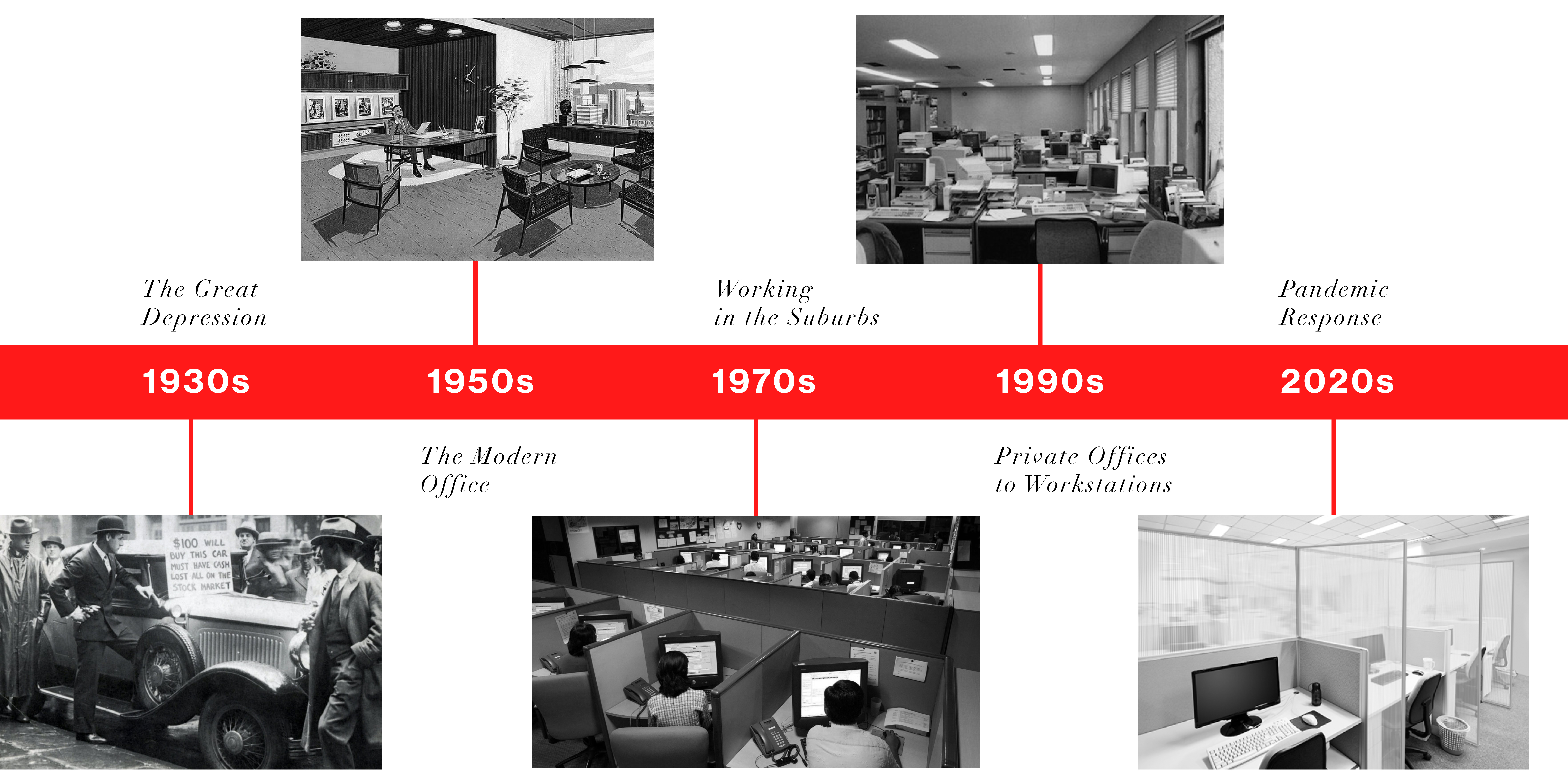
1930s: The Great Depression
The oft-referred to Roaring Twenties in the United States brought on a decade of prosperity and development during the 1920s. As published in the Tar Heel Junior Historian from the spring of 2004:
The decade of the 1920s helped to establish America’s position in respect to the rest of the world, through its industry, its inventions, and its creativity. (Silverstein, 2004)
However, the Great Depression brought this prosperity to a grinding halt. Although the exact cause of the Great Depression is still being debated to this day, it is fair to say there were multiple contributing factors.
According to history expert Martin Kelly, the five causes of the Great Depression were: the stock market crash of 1929, bank failures, reduction in purchasing, American economic policy toward Europe, and the great drought. These key elements resulted in reduced spending and investment, decreased production, and increased unemployment.
Considered to be the worst economic crisis of modern history, the Great Depression left a harsh and lasting memory for the entire country. But it also laid the foundation of monumental economic and social change.
The boost of the economy after the Great Depression has been attributed to a multitude of factors, long argued over. The New Deal championed by President Franklin D. Roosevelt was one of the major efforts aimed at stimulating the American economy. A response to the frustration with President Hoover’s failed economic policies, FDR’s New Deal was put into action immediately following his election.
In the First Hundred Days of his new administration, FDR pushed through Congress a package of legislation designed to lift the nation out of the Depression. FDR declared a “banking holiday” to end the runs on the banks and created new federal programs administered by so-called “alphabet” agencies. (Great Depression Facts – FDR Presidential Library & Museum, n.d.)
In fact, there were many major infrastructural projects that were pushed forward by the New Deal which was successful in the effort to get Americans back to work and being an active part of the economic recovery.
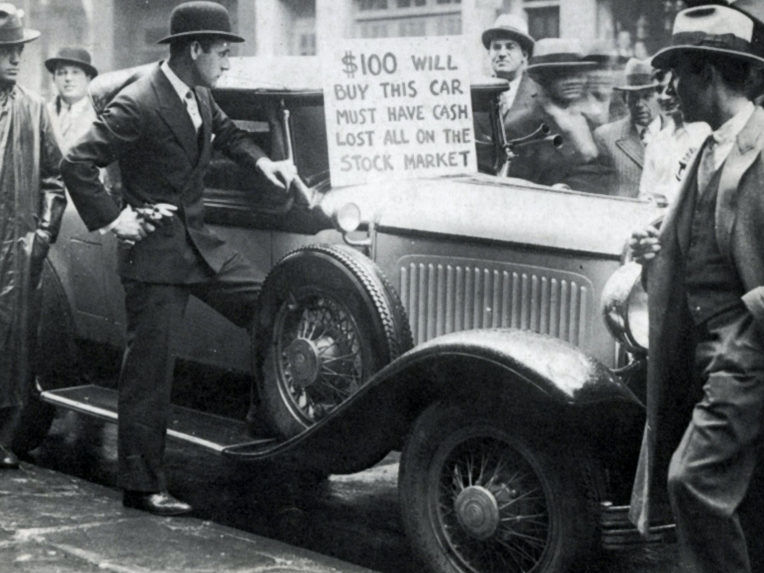

1950s: The Modern Office
With the end of WWII, millions of soldiers returned to become part of the peacetime economy. The production and manufacturing processes that had been converted to the war effort transitioned back, with many new industries emerging alongside the pre-war enterprises. Government spending as part of the war effort was no longer artificially propping up the economy, nonetheless the economy continued to expand.
The nation’s gross national product rose from about $200,000 million in 1940 to $300,000 million in 1950 and to more than $500,000 million in 1960….More and more Americans joined the middle class. (Moffatt, Mike 2020)
The significant economic growth during the 1950s led to the development of what is now referred to as the modern office.
Formed in a hierarchical organization, the modern office empathized senior staff along the perimeter, providing them with the best views and natural light. Regular staff were relegated to the interior of the floor, crammed together in a relatively uniform space.
Offices of the 1950s often featured resolute, heavy furnishings. Chairs and desks were typically made of wood, and workspaces for senior staff were especially ornate. The ‘mid-century’ furniture style emphasized core principles in the ‘50s, including functionality and efficiency. Large desks with pedestals were a sign of high-ranking team members, while the open area of the office was usually stocked with small individual workspaces. (Office Design Throughout the Decades: The 1950s, 2019).


1970s: Working in the Suburbs
The 1970s saw a continued surge of economic development as many small businesses grew into large corporations. It was during this time that some of what are now the largest companies in the world, such as Apple, got their start. As technology companies centered in California blossomed, they built large office campuses in suburban locations:
Abundant capital, inexpensive land and a seemingly endless flow of new ideas allowed Silicon Valley (so named in the early ’70s) to flourish. The physical module of one- and two-story tilt-up buildings surrounded by surface parking and buffered from streets by landscaping became a standard product, delivered on spec by developers for a surging new industry. (The Corporate Campus: A Local History, 2016)
As more and more companies built office complexes outside of the city, the effect only served to enhance the already car-centric mindset of the time period. Naturally, mass transit systems have developed in areas with higher population density due to increased ridership, therefore, getting out to an office complex disconnected from transit created heavy reliance on car use.

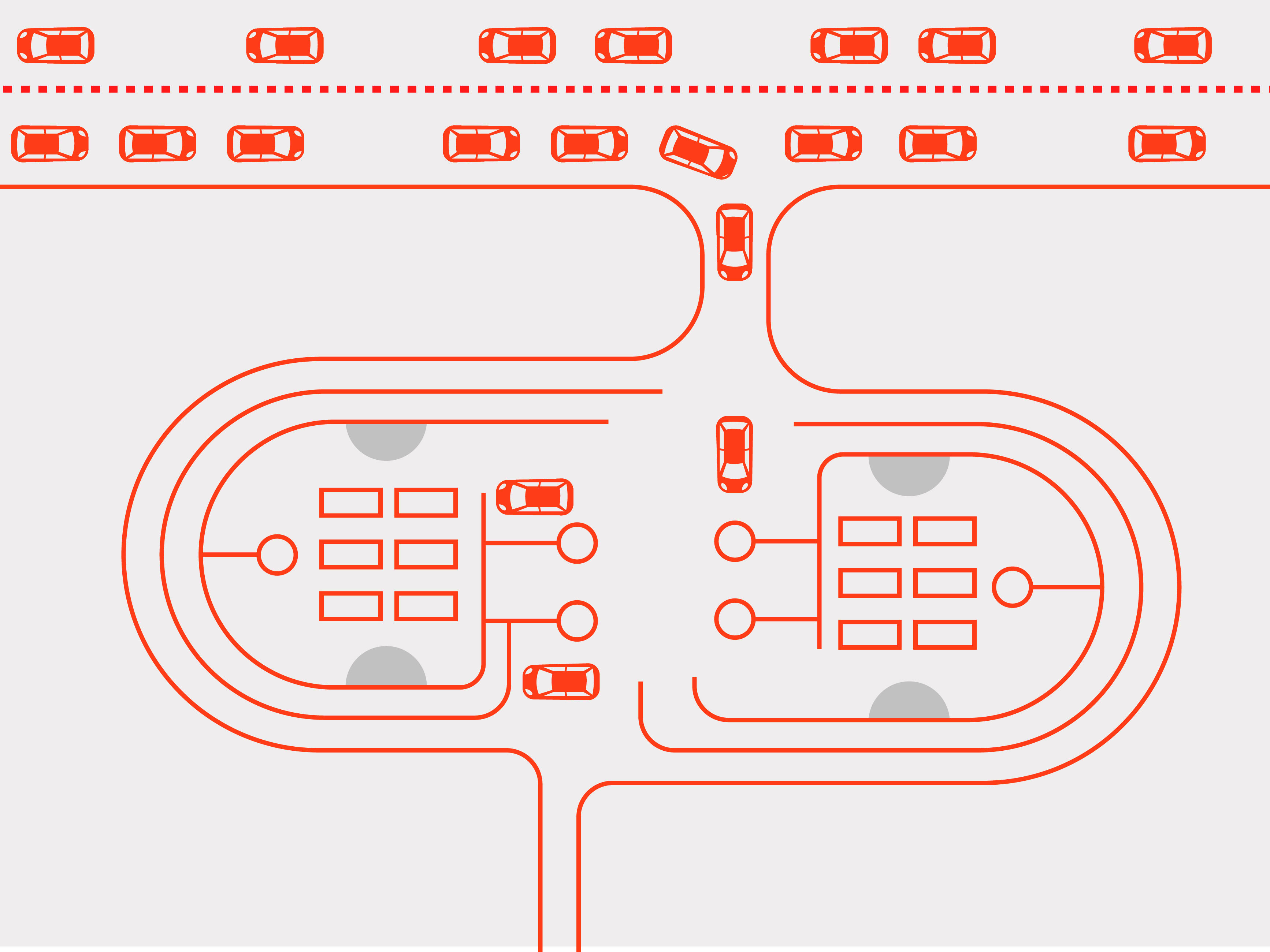
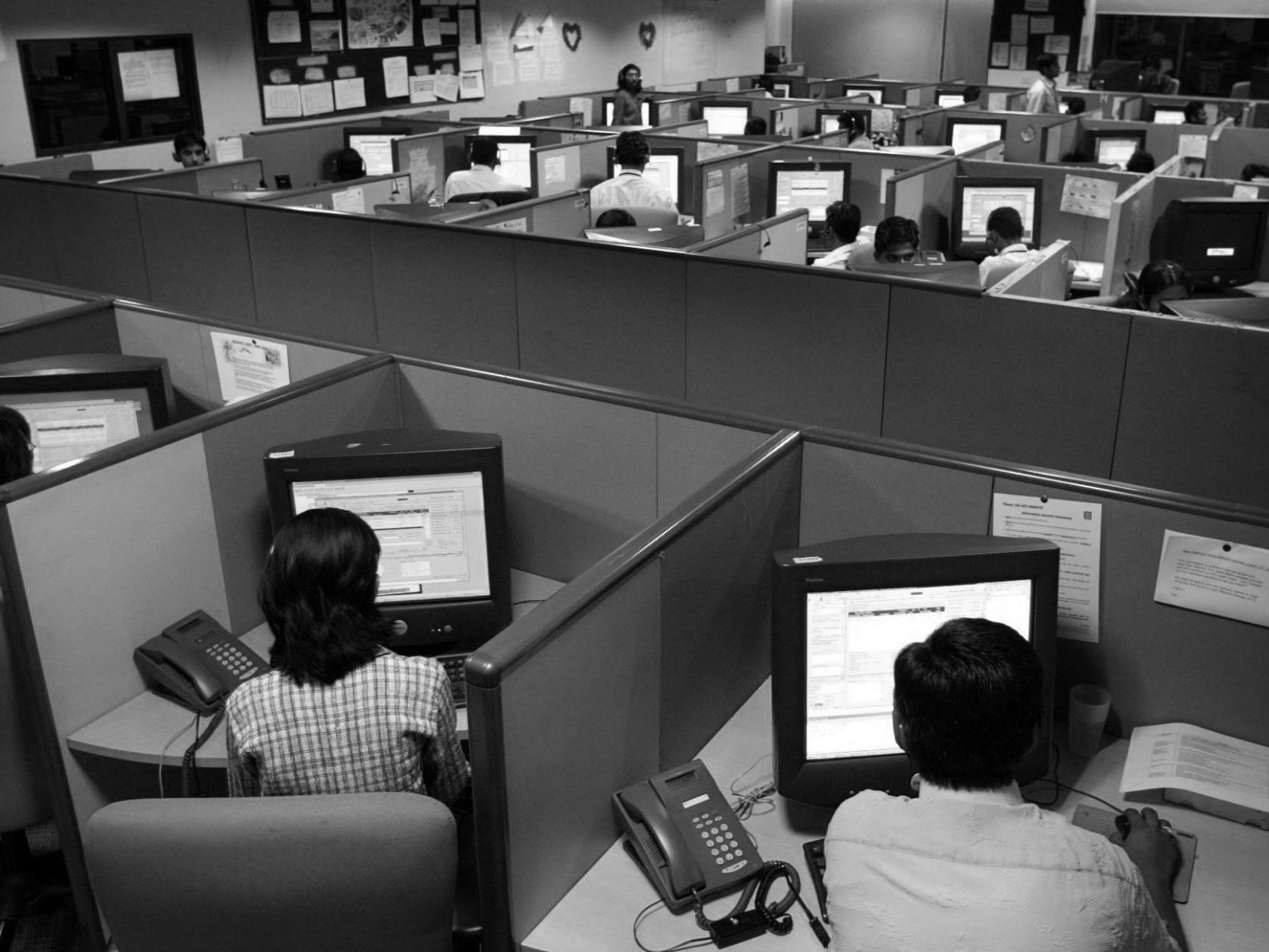

1990s: Private Offices to Workstations
The economic prosperity the U.S. enjoyed in the 1990s, while unexpected, was certainly welcomed after the many challenges faced during the energy crisis and inconsistent economy of the 1970s and 1980s:
Globalization was in full swing, and in ways that redounded distinctly for the good of this country…. There is no question that the nineties were good years. Jobs were created, technology prospered, inflation fell, poverty was reduced. (Stiglitz, J., 2002)
With such robust job growth came the need for new and more efficient use of available space within workplaces. The longstanding organization of private offices along the exterior and everyone else in the left-over space was no longer appropriate for the modern workplace.
The U.S. General Services Administration (GSA) published “The Integrated Workplace: A Comprehensive Approach to Developing Workspace” which provided key guidance for creating a better workplace. The report outlined methods to determine the needs and measure the effect of the workplace on employees. The report centered on how to “remain competitive and stay ahead of rapid changes in business and technology is to continually reinvent itself, using workspace as a strategic tool that helps to meet those goals.” (The Integrated Workplace: A Comprehensive Approach, 2020).
In the shift from private offices and cubicles to a workstation system, employers endeavored to better design the workspace. By creating a more inviting and supportive working environment, employers would gain many benefits such as increased productivity, reduced absenteeism, and improved overall well-being of employees.
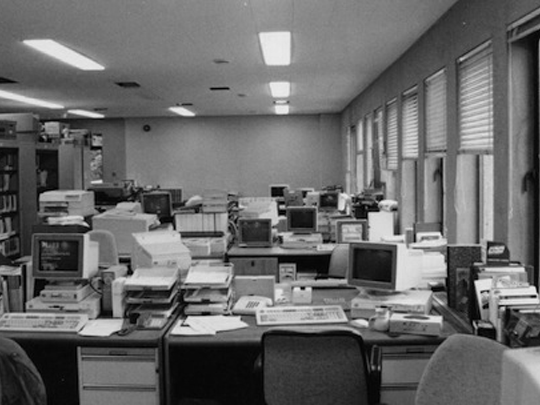

2020: Pandemic Response
Although 2020 started with a bullish market, the worldwide coronavirus pandemic has brought that to a halt. Given the lack of a carefully coordinated, science-based response, the U.S. continues to struggle. It should come as no surprise that such a major life-threatening event has resulted in a major economic slowdown, huge unemployment numbers, and many other adverse social and political effects.
The escalation of the coronavirus pandemic has truly brought to light the disparity between the haves and the have-nots in a way not seen in recent history. While the wealthy impatiently call for everyone else to get back to work, those whose work has been deemed ‘essential’ continue their work, often without additional compensation.
The system is long overdue for change. Not surprisingly, the pandemic is acting as a catalyst by redefining the modern workplace. Those who can have transitioned to working remotely, often juggling family care at the same time. The way that we work and collaborate has suddenly shifted, with many struggling to become accustomed to what will likely become the new normal. We are learning to redefine how we collaborate, shifting from being together in a conference room to video calls and sharing screens. There are many talented groups of people around the world who continue to develop and refine these ideas. It is up to all of us to learn from this latest shift and redefine what the new workplace will be.



References
Silverstein, B. A. (2004). 1920s: A Decade of Change | NCpedia
Kelly, M. (2020, March 26). The Great Depression and Its Causes. ThoughtCo.
History.com Editors. (2020, April 6). Stock Market Crash of 1929. HISTORY.
Smiley, G. (n.d.). Great Depression. Econlib. Retrieved August 17, 2020
Moffatt, Mike. (2020, February 11). What Caused the Post-War Economic Housing Boom After WWII?
Office Design Throughout the Decades: The 1950s. (2019, July 15). Environments Denver.
Myre, G. (2013, October 16). The 1973 Arab Oil Embargo: The Old Rules No Longer Apply
The Corporate Campus: A Local History. (2016, September 28). SPUR
Stiglitz, J. (2002, October 1). The Roaring Nineties. The Atlantic.
Gsa.gov. 2020. The Integrated Workplace: A Comprehensive Approach. [Accessed 27 August 2020].

